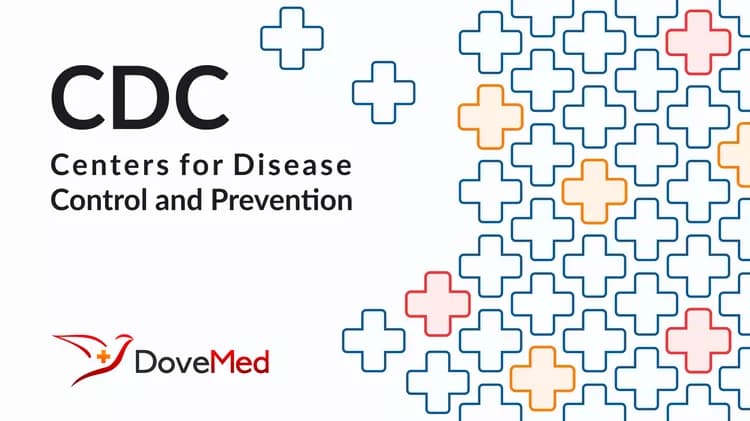
U.S. Infant Vaccination Rates High
U.S. Infant Vaccination Rates High
Unvaccinated Still Vulnerable
The vast majority of parents are making sure that their children get vaccinated against potentially serious diseases, according to data from CDC’s 2013 National Immunization Survey (NIS) – Children (19-35 months) published in this week’s Morbidity and Mortality Weekly Report (MMWR). While vaccination coverage increased or remained stable for all routinely recommended childhood vaccines in 2013, coverage varied by state, and low coverage levels can leave states and communities vulnerable to outbreaks of potentially serious vaccine preventable diseases.
In 2013, vaccination coverage increased or remained stable for all routinely recommended childhood vaccines. Vaccination coverage remained over 90 percent for the vaccines that prevent measles, mumps, and rubella (MMR), poliovirus, hepatitis B and varicella, and increased slightly for rotavirus vaccine, from 69 percent in 2012 to 73 percent in 2013, and for 1 or more doses of hepatitis A vaccine from 82 percent in 2012 to 83 percent in 2013. Administration of the birth dose of Hepatitis B rose from 72 percent to 74 percent. The percentage of children who received no vaccines remained low, at less than 1 percent of children in 2013.
“I want to personally recognize the hard work of doctors and nurses coping with many challenges in the course of clinical work, and commend parents who, despite competing responsibilities, continue to prioritize immunization to keep their children healthy and safe,” said Dr. Anne Schuchat, director of the National Center for Immunization and Respiratory Diseases. “These people are central in keeping young children healthy by ensuring they receive the recommended vaccines on schedule.”
While overall immunization rates remain high, state immunization programs, clinicians, and parents are still challenged in getting all the recommended doses during the second year of life. There are three vaccine series that include a booster dose in the second year of life: the vaccines that prevent diphtheria, tetanus, and pertussis (DTaP), Haemophilus influenzae type b (Hib), and Pneumococcal disease (PCV). Coverage of these boosters remained at similar levels in 2012 and 2013.
There was lower coverage for these booster doses among children living in poverty, compared to children living at or above the poverty line. These children also had lower coverage with the vaccines for poliovirus, rotavirus, and the hepatitis B series. In addition to the booster doses, coverage was lower for black children compared to white children for the vaccine that protects against rotavirus.
Families who need help paying for childhood vaccines should ask their healthcare professional about the Vaccines for Children program, which provides free vaccines to uninsured children and many others with financial barriers. For help in finding a local healthcare professional who participates in the program, parents can contact their state health department or visit www.cdc.gov/features/vfcprogram.
Immunization coverage also varied by state, both for individual vaccines and for the series measure, which provides a shorthand assessment of overall performance by looking at the completion of immunizations against 11 different diseases (4 doses of DTaP , 3 doses of poliovirus vaccine, 1 dose of measles-containing vaccine, full series of Hib vaccine,3 doses of Hep B vaccine, 1 dose of varicella vaccine, and 4 doses of PCV). In that series measure, the range was from 82 percent in Rhode Island to 57 percent in Arkansas. The most critical coverage variation was the 17 states that had less than 90 percent coverage with the MMR vaccine.
National coverage of children 19-35 months old with at least one dose of the measles, mumps, and rubella (MMR) vaccine is 92 percent. While seemingly high, 1 in 12 children did not receive their first dose of MMR vaccine on time, underscoring a sizeable proportion of children that remain susceptible. As of Aug. 22, 2014, 592 measles cases had been preliminarily reported in the United States, the most cases of any year since 1994. Measles is most frequently brought to the U.S. by unvaccinated U.S. travelers returning from abroad, and it can spread quickly in communities with groups of unvaccinated and under-vaccinated people.
The NIS is an annual national immunization report card for infants and toddlers. It describes national, state, and selected local area vaccination coverage estimates among children 19-35 months old. For more information on the 2013 NIS, visit http://www.cdc.gov/nchs/nis.htm.
The CDC recommends that all children be vaccinated according to the recommended schedule. Parents with questions or concerns should talk with their child’s doctor or visit CDC’s vaccine website for parents at www.cdc.gov/vaccines/parents or visit www.vaccines.gov.
Today’s article will be available on the Morbidity and Mortality Weekly Report website at http://www.cdc.gov/mmwr/ after the embargo lifts at 1:00 p.m. ET.
For more information on the National Immunization Survey (NIS), please visit:
http://www.cdc.gov/nchs/nis.htm
CDC’s vaccine website for parents:
Provider Resources for Vaccine Conversations with Parents:
www.cdc.gov/vaccines/conversations
###
U.S. DEPARTMENT OF HEALTH AND HUMAN SERVICES
Related Articles
Test Your Knowledge
Asked by users
Related Centers
Related Specialties
Related Physicians
Related Procedures
Related Resources
Join DoveHubs
and connect with fellow professionals

0 Comments
Please log in to post a comment.